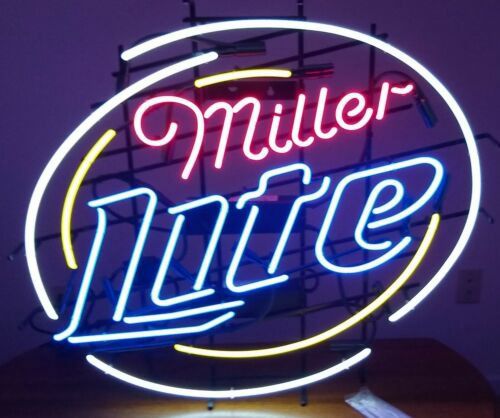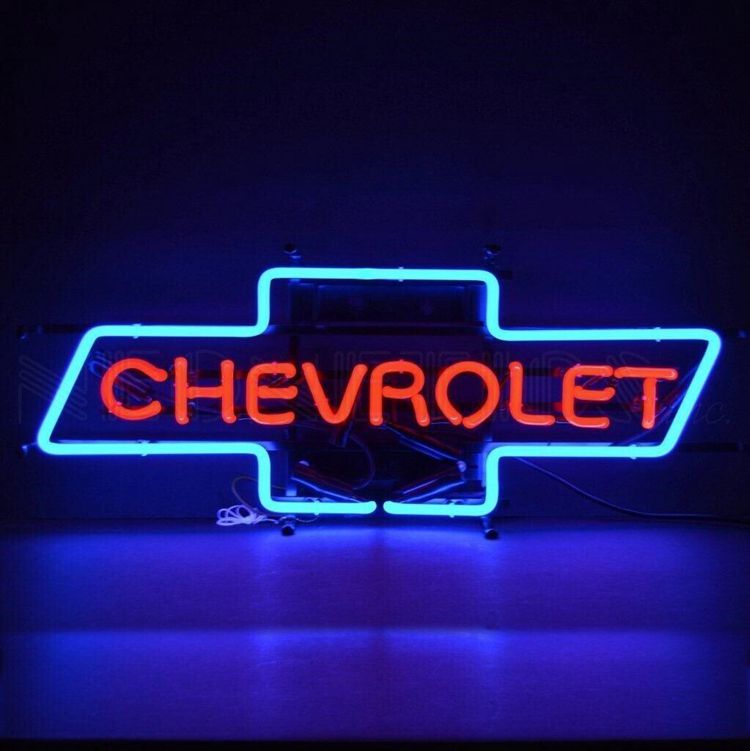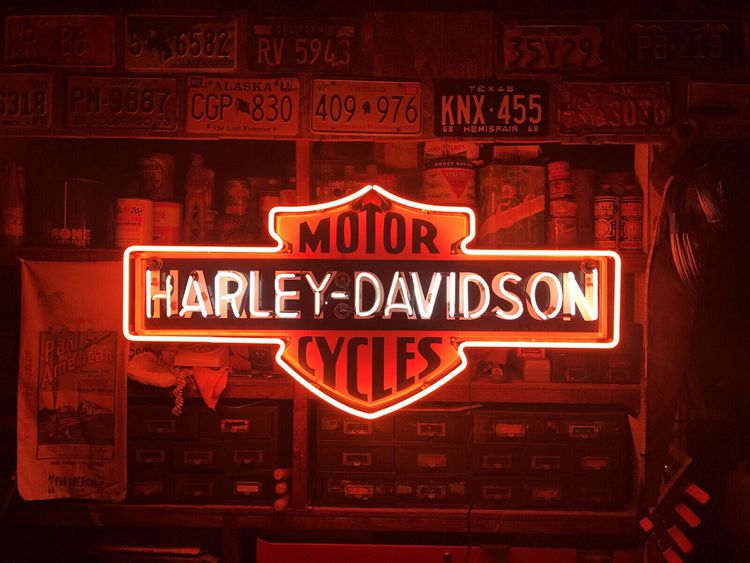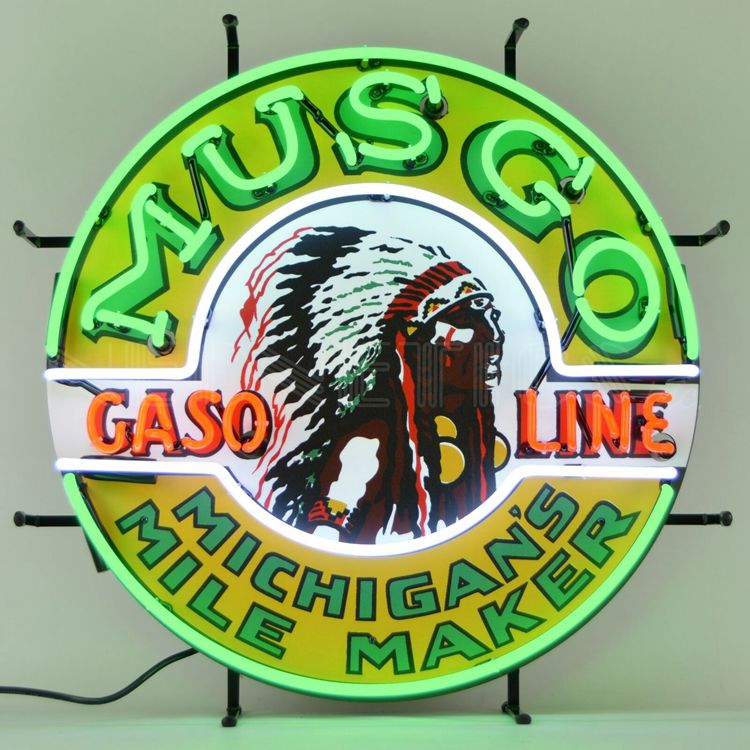Neon has evolved from laboratory trials to the skyscrapers of Las Vegas and London in the last hundred years or so, illuminating some of the most recognizable buildings in the most popular places on earth.
The earliest neon signs in the United States cost thousands of dollars, and neon soon became a sought-after luxury good. Its red light was associated in the 1960s and 1970s with some of the world’s less respectable locales, but as time has gone on, it has developed into more than simply a branding medium; it has become a form of art.
Nowadays, the idea that neon signs may be used to produce striking art pieces that can be employed in a variety of ways is becoming more and more popular among musicians, designers, artists, and entrepreneurs.
From the 1920s until the 1960s, they reached the height of their glory. Bright neon signs advertising everything from hotdogs to expensive apparel in retail stores to nearby nightclubs lit the streets.
When one thinks of these glistening streets, places like Times Square and the Las Vegas Strip immediately come to mind. The “Welcome to Fabulous Las Vegas” sign, found on the southern end of the Strip, is one particularly well-known neon sign.
Neon signs were extremely expensive advertising tools, but now you can collect them and use them to enhance and customize home decor. Nowadays, neon can also be found in stores, cafes, clubs, concerts, and even residences.
If you are an enthusiastic collector of antique neon signs, stick around because this guide is for you. In this neon sign value guide, you are going to learn about the history of antique neon signs and how to identify and evaluate them. Let’s begin!
Table of Contents
History of Neon Signs
Neon signs were discovered more than a century back; since then, they have come a long way. Following is an attempt to summarize the history and origin of the neon sign:
The Origin of Neon
A French engineer named Georges Claude presented neon for the first time at the Paris Motor Show in 1910. Claude observed that a sealed glass tube filled with rare gas would emit a “light discharge” when a voltage was applied through its electrodes.
Claude’s air liquefaction business, Air Liquide, was able to create large amounts of neon since it was a co-product of the air liquefaction mechanism. Still, more basic variations of this technology had been used for many years, including the Geisler tube.
Claude founded Claude Neon after discovering the possibilities of its advertising and marketing. By 1919, the entryway to the Palais Garnier and the Italian vermouth company Cinzano had lighted neon signs.
The Prime Period
By selling two neon signs to a Packard car dealership in Southern California in 1923, Claude introduced neon advertising to the United States. People on the street would stop and look as if they could see the light of the placards even during the day since they were so dazzling.
The popularity of neon signs quickly took off and established itself as a mainstay of outdoor advertising. Businesses at the time considered it a gimmick employed to keep themselves competitive, despite the fact that it was more costly than other forms of signage.
Fluorescent tube coatings were the most notable breakthrough. This coating gave users more color choices. About twenty different colors were available at the time to sign makers. They currently number over 100.
Fun Fact: Although neon was the first gas being used in neon signs, it only produces a limited spectrum of hues, primarily red and orange tones.
However, the alternative gas to achieve similar dazzling effects was argon, doped with a little mercury and employing phosphorescent films on the glass. The colors produced ranged from blue through yellow, purple, green, and white.
Even though neon was out of fashion in the late 1950s and early 1960s, there was a slight comeback in the 1980s.
These vibrant hues were employed in TV episodes like Magnum PI and Miami Vice to depict the tropical settings of each. The neon look was rediscovered thanks to its application in television.
Use of Neon Signs Today
Traditional neon signage isn’t used much anymore due to health and environmental concerns. Initially, manufacturers produced the glass with lead in order to soften it more quickly with a gas flame, but lead-related health concerns compelled them to search for more ecologically safe soft glassware alternatives.
Neon signage’s appeal has declined over time in favor of incandescent and LED signs because of safety worries, inefficiency, and cost. Due to its efficiency, LED is now the main lighting source for lighted signage. LEDs are also used by manufacturers in faux-neon signs and design components.
Despite its considerably decreased use, some sign makers continue to utilize neon signs to evoke nostalgia for the 1940s and 1950s.
Miniature neon signs have been increasingly popular in interior decoration in recent years, for both commercial and private spaces, to offer a splash of color and light.
Graphic design also employs neon-like features and hues. You can purchase complete digital kits to incorporate these design concepts into graphics and graphic imaging artistically. The vibrant glow of neon will continue to be used in advertising despite the golden age being over.
Different Styles of Antique Neon Signs
Based on the brand, theme, design, hue, or shape, an old neon sign can be found in a wide range of styles. There were almost no design guidelines, and the only thing that mattered was creating a sign that would draw customers.
While there are many different neon sign kinds that collectors appreciate, they usually choose one and stick with it. They can be loosely divided into the following groups:
1. Neon Signs for Branding and Logo
This could further be divided into subcategories, i.e.:
● Beer Neon Signs
In eateries and pubs, businesses advertise using these neon signs. The most sought-after classic brands currently available include Miller, Coors, Budweiser, Heineken, Carlsberg, and Tuborg.

● Tobacco
Collectors enjoy old neon signs for cigarette companies even if the fight against tobacco has been tough over the past few decades. The most looked at parts are for Camel, Marlboro, and Lucky Strike cigarettes.
● Soda Neon Signs
Coca-Cola, Orange Crush, 7-U, Fanta, and Pepsi were a few pioneering businesses with their own neon signs. They are in high demand right now and make a great addition to collections of antique neon signs or Coca-Cola artifacts.
● Vehicle Neon Signs
The majority of oil firms, including Gulf Oil, used gas stations as outdoor billboards for their enterprises. Collectors want to use these items as distinctive decorations.
Watch this informative video on neon signs history to learn more!
2. Neon Signs with Text
Neon signs with text, such as Snack bars, Cocktails, and Hungry signs, were utilized by restaurants and retail establishments to advertise their offerings. The vintage signs in this collection with festive sentiments are the most fascinating.
Our favorite has to be the Happy New Year!
3. Neon Signs in Various Shapes
Shaped signs are often adored by collectors. There are several models available whose appearances are entirely the product of the creator’s imagination. Their ability to communicate without using words was an advantage.
The most well-liked are the neon signs shaped like:
- Girls
- Coke Bottles
- Fish
- Ice Cream Cone
- Anchor or Nautical-Themed
- Guitar
- Music Symbol
- Open Neon Signs
These retro neon patterns are usually found paired with brand signage, but they can occasionally appear on their own. Businesses used them to tell clients that the sales station was accessible.
How to Identify Antique Neon Signs?
When purchasing a neon sign, the first thing to do is to make sure it is genuine. Vintage neon beer signs are especially important to watch out for because old beer signs worth money are the highest, and tricksters frequently imitate them.
Genuine neon signs made before the 1960s had a wire wrapped in fabric or rubber. The majority of professionally restored signs have newer stuff since you shouldn’t use the sign until this wiring has been replaced.
Genuine antique neon advertising signs worthy of collecting will have corrosion, signs of sun damage, broken sections, etc.
Neon Signs Value
If you are wondering how much is my neon sign worth, here’s the answer:
The price of antique neon signs can range from a few dollars to hundreds or even thousands of dollars. There are several reasons for this pricing range:
Age
As with all antique collectibles, older neon signs cost more than those made in the last several decades. For instance, collectors prize 1950s-era items and are willing to pay a lot for old items in top shape.
Physical Condition
Since they were typically erected outside, it is quite impossible to find a vintage neon sign completely untouched by wear. This means you can see rust, broken parts, or fading since they were exposed to terrible weather and intense sunshine.
Functioning antique neon signs are significantly more valuable than non-working ones, but they are also more difficult to find. If having a working neon sign is vital to you, you might want to find out how much it will cost to restore a huge, inoperable sign before making a purchase.
Since neon sign repair is a highly specialized skill, it is not inexpensive. You should be aware that the hardware required to fix neon signs might cost thousands of dollars if you plan to do it yourself.
The ability to bend neon tubes, remove air from them with a vacuum pump, and then replace the gas in the tube may be learned by anyone.
If going to this degree doesn’t appeal to you, there’s a good possibility that every old neon sign you take to a nearby sign shop would be able to be restored. Just be aware that specialized neon sign restoration work might cost up to $500 per sign or more.
Brand
Based on those currently being sold on the market, the most sought-after vintage neon signs advertise beer and oil.
Keep in mind that all works created throughout the first half of the 20th century are desirable to collectors. Simply put, more expensive neon signs for more prestigious brands are only a matter of money.
Size
As a general rule, larger signs are more in demand and usually cost more money. But because they need room for storage, big pieces might be hard to find collectors for.
Complexity of Design
You can infer that intricately designed neon signs are worth more than straightforward, less appealing ones. Their usage is more widespread, which is expensive.
Rarity
Neon uncommon or unusual signs cost more than regular neon signs. Rare items can sell for a lot of money at auctions, especially if they are fully original and in perfect operating order.
Demand
Neon signs and most antique items are only valuable because they are in short supply and high demand. A neon sign will cost more when there is greater demand, and vice versa.
Marketing Potential
Neon signs that are actually useful cost more. For instance, old COCKTAILS neon text signs are still usable by bars, and they’re inclined to pay for them. A SEALY MATTRESS neon sign is an artifact of history. However, it can only be used as a garage decoration and is therefore worthless.
The Most Expensive Neon Signs in History
The average value of antique and vintage neon signs is between $100 and $350, but this standard has occasional exceptions. The following items are on the top-priced list:
Chevrolet
Ron Pratte, a car collector, auctioned off his collection of auto advertisements in 2015. Given that only two Chevy Boy neon signs by a 1950s Chevrolet dealership were made, they were quite rare. It was purchased for $69,000 by one collector.

Hamm’s Beer Scene-O-Rama
Breweriana, or vintage beer advertising signs, may be expensive, especially those from before Prohibition. Generally, items in prime shape are valued at a few hundred bucks.
The back-lit signs, also known as “Scene-o-Rama” signs, were produced by the Lakeside Plastics firm for Hamm’s Beer and were well-liked from the late 1950s to the 1970s. You can get it for $500 to $1,500.
Harley-Davidson Motorcycles
A truly priceless find is a rare Harley-Davidson neon sign from the 1930s. It was auctioned off in 2015, and one of the ardent Harley lovers bid $86,250 on it.

Musgo Gasoline
For the purpose of promoting Musgo Gasoline, the most expensive neon sign ever was created. Because this business only existed from 1926 to 1927, almost anyone has ever heard of it.
Only twelve of these neon signs are said to still be in existence, and one collector spent $164,700 at auction in 2016 for one in perfect condition. The next year, another one sold for $55,000.
Here is another Musgo Gasoline neon sign listed on eBay for $424.99:

Why Are Neon Signs So Popular?
There are many reasons to appreciate neon signs, and people all across the world are beginning to concur. The top 5 causes that, in our opinion, have contributed to neon’s resurgence are examined below:
- Variety of Colors– Although red is the neon industry’s go-to color, there are now a variety of other colors that may be used to create signs that complement a brand or give a splash of color to a space.
- Versatility – Neon tubes come in a range of diameters, and as they are hand bent, nearly any style that employs a constant stroke width can be “neonized.”
- Practically Impossible to Miss– You truly can’t miss it. Neon is one of the best techniques for store owners and marketing managers to make their establishments visible.
- A Form of Art – Neon is a true work of art. You only need to take a quick glance at a few of the examples above to realize how simple it is to the eye.
- It Glows– Neon glows rather than lights up, in contrast to most conventional lighting sources. As a result, the impact is always pleasing to the eye rather than being overly bright.
Where Can I Find Vintage Neon Signs?
The simplest approach to collecting neon signs is probably to buy second hand neon signs on auction sites like eBay if you already know what area of interest you want to focus on.
However, if you’re like some individuals and prefer a challenge, you might want to look for vintage neon signs alongside country lanes as well as at swap fairs, thrift sales, and junkyards.
Conclusion
Are you an admirer of a particular category of neon signs? If so, tell us what you are a fan of in the comment section below and if you managed to find a few worthy pieces for your collection.
All neon signs are valuable, but those built in the 1940s and 1950s were highly prized for being unusual and custom-crafted. You should ensure things function properly before buying them because their condition is important.
Take your time and choose a piece with which you are completely satisfied. We wish you the best of luck!






![Vintage Schwinn Bikes: [Types, Identification, and Values]](https://www.txantiquemall.com/wp-content/uploads/2022/05/5.-Schwinn-1967-Ramshorn-Fastback-Stingray-Sky-Blue-vtg-600x450.jpg)
